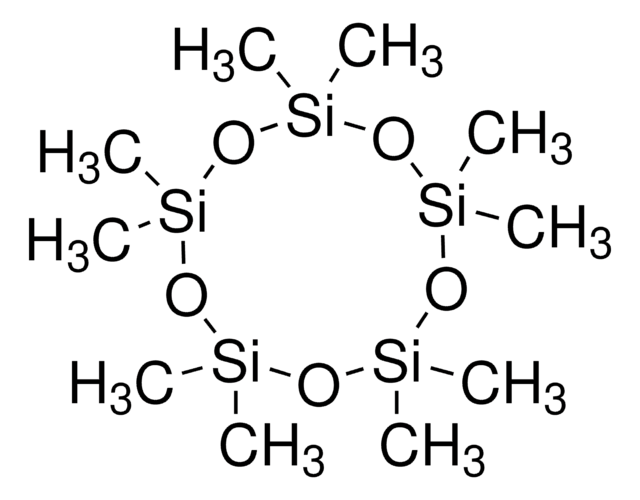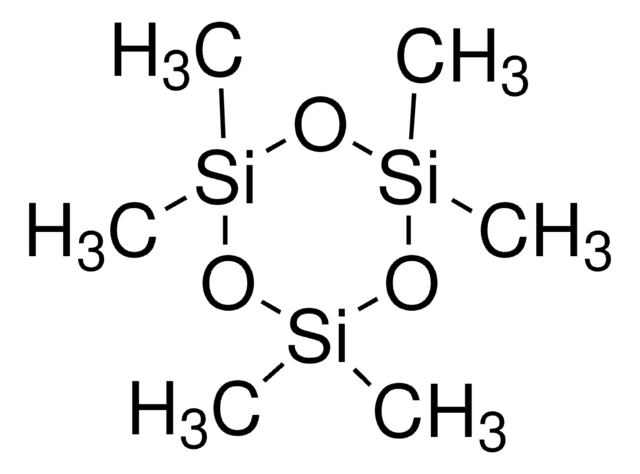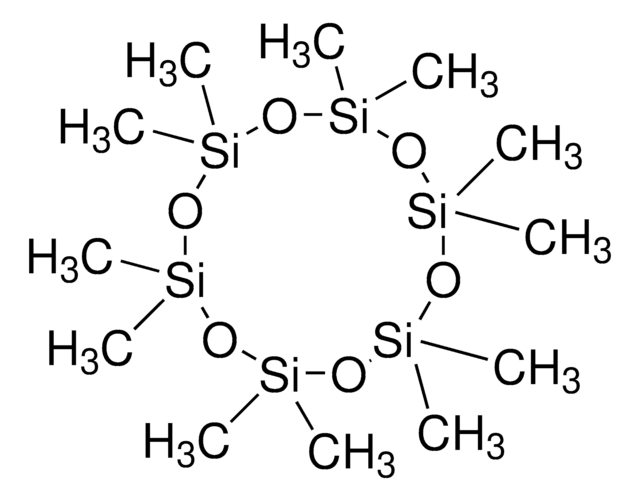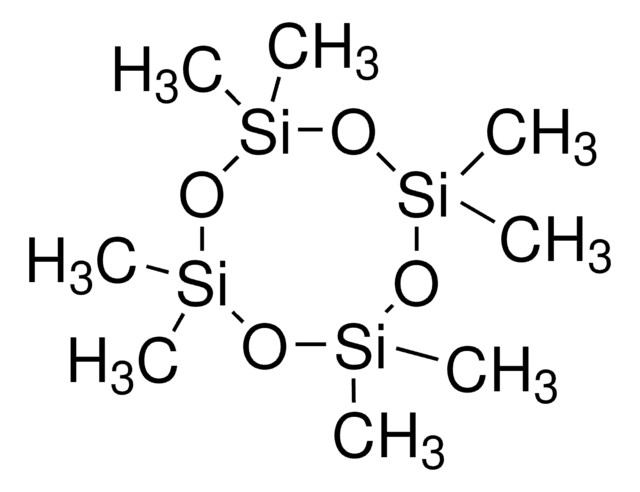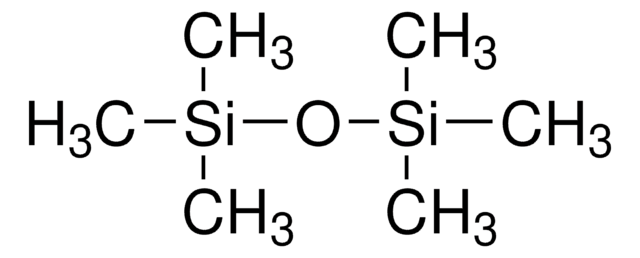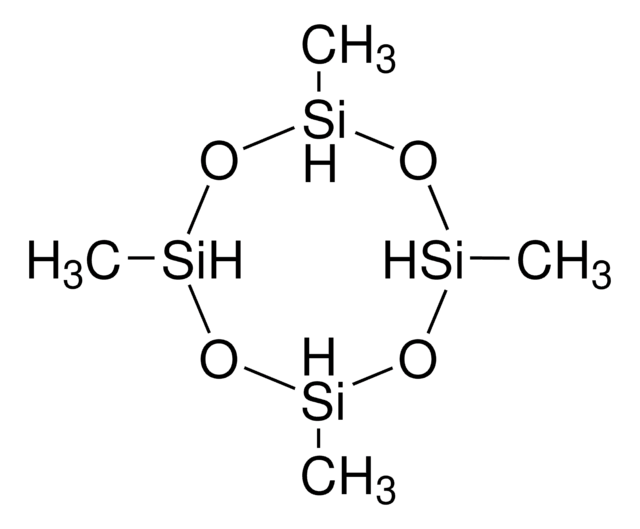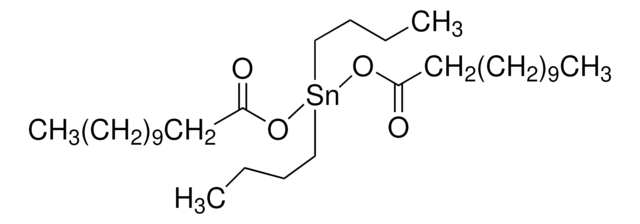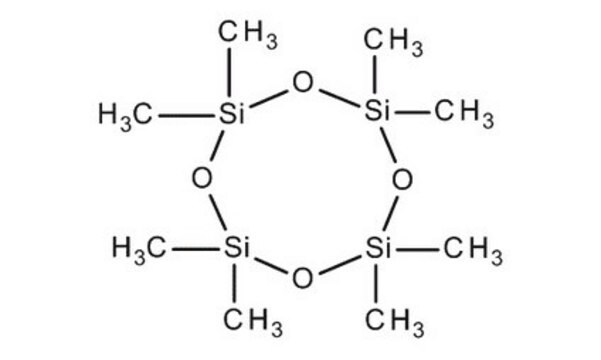235695
Octamethylcyclotetrasiloxane
98%
Synonyme(s) :
2,2,4,4,6,6,8,8-Octamethyl-1,3,5,7,2,4,6,8-tetraoxatetrasilocane, octamethyl-1,3,5,7,2,4,6,8-tetraoxatetrasilocane
About This Item
Produits recommandés
Densité de vapeur
1 (vs air)
Pureté
98%
Forme
liquid
Indice de réfraction
n20/D 1.396 (lit.)
Point d'ébullition
175-176 °C (lit.)
Pf
17-18 °C (lit.)
Densité
0.956 g/mL at 25 °C (lit.)
Chaîne SMILES
C[Si]1(C)O[Si](C)(C)O[Si](C)(C)O[Si](C)(C)O1
InChI
1S/C8H24O4Si4/c1-13(2)9-14(3,4)11-16(7,8)12-15(5,6)10-13/h1-8H3
Clé InChI
HMMGMWAXVFQUOA-UHFFFAOYSA-N
Vous recherchez des produits similaires ? Visite Guide de comparaison des produits
Description générale
Application
Mention d'avertissement
Warning
Mentions de danger
Conseils de prudence
Classification des risques
Aquatic Acute 1 - Aquatic Chronic 1 - Flam. Liq. 3 - Repr. 2
Code de la classe de stockage
3 - Flammable liquids
Classe de danger pour l'eau (WGK)
WGK 3
Point d'éclair (°F)
123.8 °F - closed cup
Point d'éclair (°C)
51 °C - closed cup
Équipement de protection individuelle
Eyeshields, Gloves, type ABEK (EN14387) respirator filter
Faites votre choix parmi les versions les plus récentes :
Déjà en possession de ce produit ?
Retrouvez la documentation relative aux produits que vous avez récemment achetés dans la Bibliothèque de documents.
Les clients ont également consulté
Articles
Dr. Tan and researcher introduce recent trends in Self-healing Soft Electronic Materials and Devices. The emergence of smart, functional SHPs will be highly beneficial to the advancement of the next-generation self-healing soft electronic devices. Autonomously self-healing devices could help to minimize the need for repair or replacement of electronics and machines, potentially reducing the cost of materials and reducing electronic waste.
Notre équipe de scientifiques dispose d'une expérience dans tous les secteurs de la recherche, notamment en sciences de la vie, science des matériaux, synthèse chimique, chromatographie, analyse et dans de nombreux autres domaines..
Contacter notre Service technique